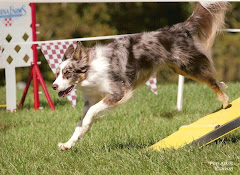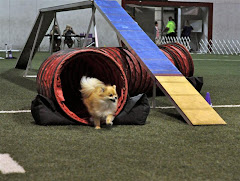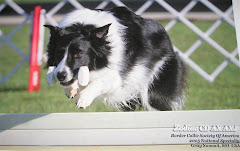This is a very common orthopedic disease of small dogs, although it can occur in dogs of any size. Toy poodles, Yorkies, Pomeranians, Chihuahuas, and Boston Terriers are some of the most commonly affected breeds. The patella, or knee cap, normally sits in a groove along the front of the knee joint, but in some dogs the groove is not deep enough and the knee cap slips out of place. Most of the time the patella will luxate towards the inside of the leg, known as medial patella luxation (MPL). Sometimes it will luxate laterally, or towards the outside of the leg. Lateral luxation is more likely to occur in a larger dog.
Mildly affected dogs will frequently have few to no clinical signs. Often this is an incidental finding on physical exam that the owner was unaware of. The classic clinical sign is a dog who is suddenly lame and carrying a leg, only to seemingly be magically cured after a few steps. What happens is the patella suddenly slips out causing difficulty straightening the leg due to the tendons becoming displaced. Once the patella slips back in the dog can ambulate normally again.
Patella luxation has varying degrees of severity and is graded on scale of 1-4. A grade 1 luxation can be manually luxated but will pop back into place when the pressure is released. A grade 2 luxation can be manually luxated but stays out of place when pressure is released. In a grade 3 luxation the patella is out most of the time but can be pushed back into place. In a grade 4 luxation the patella is permanently out of place and can't be pushed back in.
Although the actual act of luxating isn't very painful, over time repeated luxation and misalignment can cause arthritis and malformation of the leg bones. So, what to do? There are several surgeries that will correct this malformation but surgery is not a blanket recommendation for all affected dogs. Most dogs with grade 1 and 2 luxations will go on to live their life with minimal issues. The occasional flare-up can be treated with rest and anti-inflammatories on an as needed basis. Joint supplements such as glucosamine and chondroitin can also help. Dogs with persistent lameness or those with severe luxations are candidates for surgery so that the deformity can be corrected before causing secondary issues.
This disease does have a genetic component and affected dogs, even if non-clinical and mild should not be used for breeding. Half of all affected dogs will have bilateral involvement, but the grades can be different on each side. In my experience large breed dogs are more likely to have clinical lameness than small breed dogs-but that is generally true of most orthopedic diseases. Cats can also have patella luxations but rarely show clinical signs.
If you are curious, yes, Lyric does have bilateral grade 2 luxations. She is rarely bothered by them-when they pop out she is able to stretch her leg in such a way as to pop them back in and has never limped. One of the well-known orthopedic surgeons who taught me in school recommended I not pursue repair as long as she is not bothered by them, even as an agility dog. Any surgery involving a joint will induce arthritis so you always need to weigh how much arthritis a dog will get if surgery is not pursued, as this can vary with individual dogs and various conditions. I do keep her, and my other dogs, on a glucosamine/chondroitin supplement.
Summer
1 year ago


.jpg)
.jpg)



.jpg)



7 comments:
Wow this sounds like a serious disease... thank you for making us aware and giving us information about it... I hope your pup feels better really soon!
LizAnn
All4UrPet Representative
http://all4urpet.com/
Check out the App store for Android and iPhone to download our mobile application! Simply search All4UrPet.
What are your thoughts about this being genetic vs. "activity induced." I have had several people from the Klee Kai world tell me that Kaiser's luxation is likely activity induced and not genetic, since we did not see any evidence of it until later in life.
I don't know that I believe it, though. If I'm honest with myself, I know that I noted an occasional skip to his gait on the right hind as early as a year old, even though the vet could not detect any reason for it. As he got older, the skipping popped up more frequently.
This summer, at 3 1/2, I noticed that it was starting to occasionally affect his jumping (he would stutter & pop), which prompted my decision to lower his jump height.
The vet only graded him about 0.5-1.0, so it's not horrible, but enough that it does affect his gait occasionally. I started him on a joint supplement with gluc/chon/msm and have noted that he skips less if I keep up a regular stretching schedule with him (admittedly, I am not good at keeping it up).
More or less there is little affect on his every day life -- but I did notice he is MUCH happier in agility jumping 8" vs. 12". I think it just removed a big worry component for him and he has stopped crashing jumps.
I actually have a luxating patella, so when my mother's shepherd/sight hound mix developed one, she called me to ask about pain. Since it's not painful, at first they let it be, but then Lucy started coming up lame on a regular basis for increasing periods of time, so my mom did finally take her in for surgery. It has made Lucy a much happier dog because now she can always go for walks and they never have to be cut short.
It's my understanding that it's a multi factorial disease with genetics being one factor. It can also be progressive in that the more the patella pops in and out the more the the groove becomes flattened and the easier it becomes to pop out more. So I do think that time and activity can make it worse but it's hard to say if agility has significantly more impact than life in general. Lyric jumps on and off the couch all day, goes up and down the stairs every time she goes outside and stands on her back legs to beg. So how much impact do eight inch jumps have compared to that? Hard to say. And since most toy breeds are not working dogs and luxating patellar don't cause lameness the way a cruciate tear or other injury does I'm not sure anyone will do a study on the impact of dog sports vs everyday life and usage.
Glad you talked about that and glad to hear that surgery is not alwyas the answer!
my golden doodle has also been diagnose with patellar luxation, he is only a year old. the problem seems to be happening more and more, at least 4-5 times a day, he lifts his hind leg, worried about him falling down stairs, any suggestions
If he is already having this many issues I would have him evaluated by an orthopedic specialist.
Post a Comment